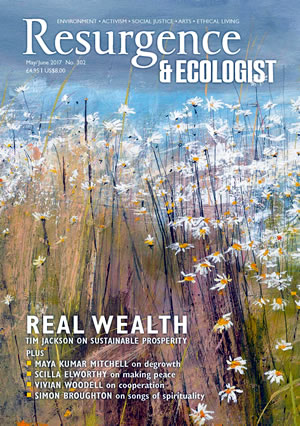If Adam Curle were alive today – he died in 2006, aged 90 – I’m sure he would keep a blog. Many followers would appreciate its diversity, its wisdom born from experience, and the wholeness, the peacefulness of its author.
To mark the centenary of Curle’s birth, Tom Woodhouse and John Paul Lederach, both giants in the field of conflict resolution, have collected an assortment of his writing. A long-time observer of the Bradford peace scene, I had heard of Curle’s reputation as the first professor of Peace Studies at Bradford University from 1973 to 1978 – his inaugural lecture is included in the book – but I had not appreciated his remarkable story or powerful writing.
After an essential biography, the collection introduces Curle’s academic work in peace studies. A later section contains his writing directly of and from his own experience. That is my only grumble: his experience was so extraordinary that it gives huge authority to the theory, and arguably should have preceded it.
Curle – his forename reflected his birthplace, L’Isle-Adam on the River Oise, north of Paris – was born into a family with branches both at the heart of the British establishment and in the world of the arts. At Oxford, he was educated in history, psychology and anthropology, bringing together insights into human personality with awareness of the broadest social contexts. There is constant dialectic between the worlds of the academic and the activist, and between issues of personal relations and national or inter-group relations.
After 1945 – he had served in the British Army, and risen to the rank of major – Curle worked on the benefits former prisoners of war found in resettlement programmes; he undertook development work in Asia and Africa; at risk to himself, he pioneered Quaker-sponsored conflict resolution and mediation in Nigeria, Zimbabwe, Kashmir… He was detained and interrogated by the apartheid police in South Africa. Later, supporting local community peacemakers in Croatia, he was humble enough to challenge his own earlier theories of mediation. Such cumulative experience gave him unique insights into the human condition, the tragic cost of war and the practicalities of peacemaking.
Curle’s reflective practice meant his writing was grounded in reality. Simply, he knew what he was talking about. He developed conflict resolution theory, distinguishing between peaceful and unpeaceful relations. There could be no lasting peace where there was imbalance (one side being weaker than the other) or a lack of awareness of oppression (for example by colluding victims). Peacemaking could even involve instigating conflict – nonviolent, of course – raising awareness and challenging oppression.
Curle’s examples from the 1960s and 1970s do feel dated: colonial liberation wars, apartheid, Britain’s negotiations to join the European Economic Community... But it is not necessary to enter that distant world in order to appreciate his analysis and values. Having become a Quaker in Ghana in the early 1960s, he explored the philosophy and practice of mediation, education and peace. Empowered by meditation, the inner peacefulness he found in non-doctrinal Buddhism, he sought the good in everyone, building relationship and trust even with the most unappealing characters he dealt with in wars around the world.
Lederach speaks of “remembering forward”. Adam Curle possessed a wholeness of perception that transcended his own era. This collection not only honours him, but also brings his thinking to a new generation, both specialist and general readers alike. Curle has much to teach us in our own troubled times. Now, if only he’d had a blog…







